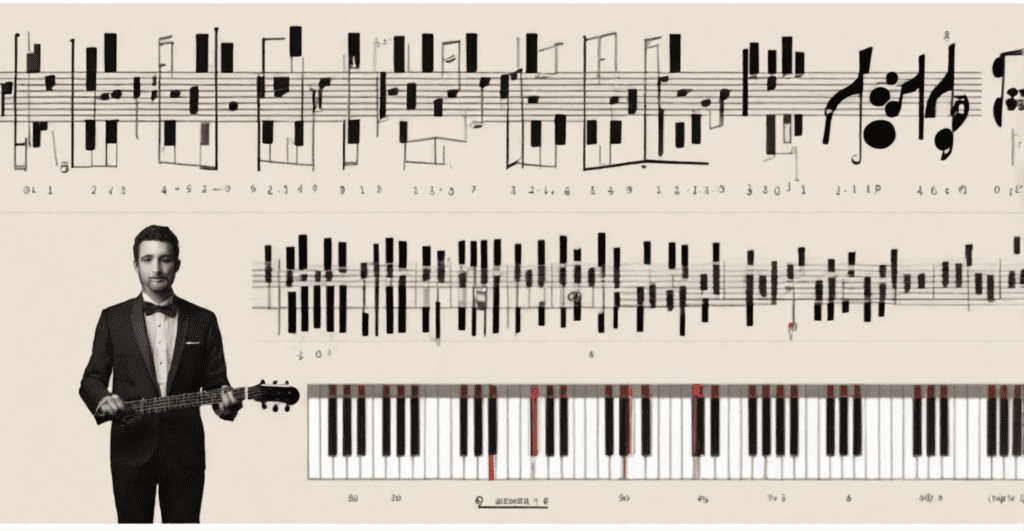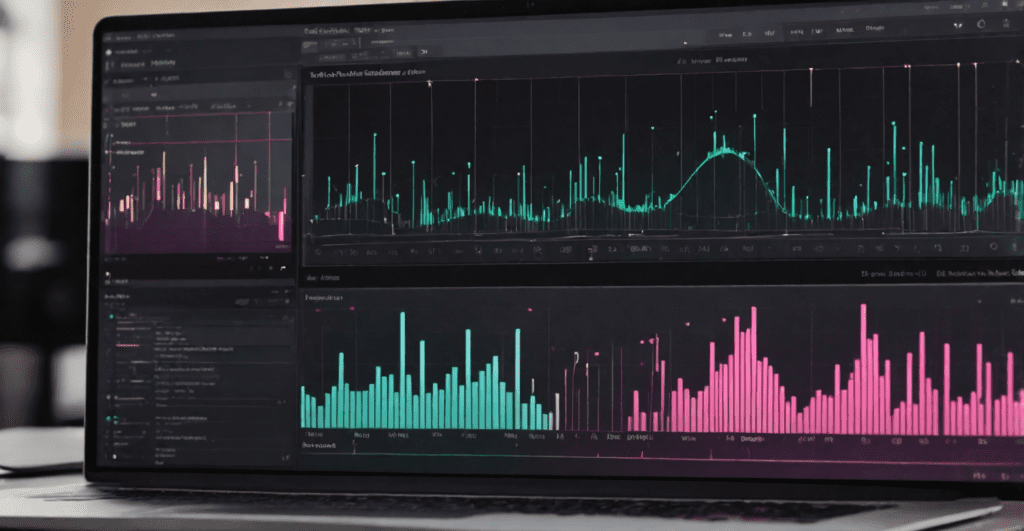Music is a complex art form that requires a deep understanding of various elements, including rhythm, melody, and harmony. One crucial aspect of music analysis is counting bars, which helps musicians, producers, and DJs understand the structure of a song. In recent years, AI technology has revolutionized the way we approach music analysis, making it easier than ever to count bars in a song. Let’s explore how to count bars in a song using ai.
What Are Bars in Music?
Bars, also known as measures, are the basic units of time in music. They are defined by the time signature and consist of a specific number of beats. The relationship between beats, bars, and tempo is essential for understanding the rhythmic structure of a song.

Why Counting Bars Is Important
Counting bars is crucial for musicians, producers, and DJs for various reasons. It helps in understanding the structure of a song, which is essential for songwriting, remixing, and live performances. Additionally, it allows for precise timing and synchronization between different instruments and vocals.
Traditional Methods for Counting Bars
Traditionally, counting bars has been done manually by listening to the song and keeping track of the beats. However, this method can be time-consuming and prone to errors, especially in complex compositions. Software tools like Digital Audio Workstations (DAWs) have made the process easier, but they still require human intervention.
How AI Can Help Count Bars in a Song
AI technology has revolutionized the way we approach music analysis. By using machine learning algorithms and deep learning techniques, AI can accurately count bars in a song with minimal human intervention. AI tools and software are becoming increasingly popular among musicians, producers, and DJs who want to streamline their workflow and improve their efficiency.
Step-by-Step Guide: How to Count Bars in a Song Using AI
- Choose the right AI tool: There are several AI-driven music software options available, each with its own features and capabilities. Research and select the one that best suits your needs.
- Upload or input your song: Depending on the AI tool you choose, you may need to upload your song or input it through a MIDI file or audio interface.
- Analyze the results: The AI tool will analyze your song and provide you with the bar count. This process may take some time, depending on the length and complexity of the song.
- Refining and adjusting the bar count: While AI tools are highly accurate, there may be instances where manual adjustments are necessary. Use your musical knowledge and experience to refine the bar count if needed.
Popular AI Tools for Counting Bars in a Song
There are several popular AI-driven music software options available, each with its own features and capabilities. Some of the most well-known tools include Melodyne, Celemony, and LANDR. These tools use advanced AI algorithms to analyze the audio and provide accurate bar counts.
Setting Up Your Own AI-Powered Bar Counter
If you’re interested in setting up your own AI-powered bar counter, you can use open-source AI models for music analysis. Python is a popular programming language for this purpose, and frameworks like TensorFlow provide powerful tools for building AI models.
Examples of Bar Counting Using AI in Real-Life Applications
Famous producers and musicians have been using AI technology for music analysis for years. For example, Deadmau5 has been known to use AI tools to analyze the structure of his songs and optimize his workflow. As AI technology continues to evolve, we can expect to see more and more examples of its use in the music industry.

Challenges of Counting Bars Using AI
While AI technology has made counting bars in a song much easier, there are still some challenges to overcome. Accuracy can be an issue, especially in complex compositions with irregular time signatures or unusual rhythmic patterns. Additionally, AI tools may have limitations in terms of the types of audio formats they can process or the level of customization they offer.
Improving Accuracy in AI Bar Counting
To improve the accuracy of AI bar counting, it’s important to use high-quality audio samples and to train the AI models on a diverse dataset of music. Incorporating human feedback and expert knowledge can also help refine the results and improve the overall accuracy of the system.
Future Trends in AI Music Analysis
As AI technology continues to evolve, we can expect to see even more advanced capabilities for music analysis. AI may be able to provide deeper insights into the emotional and psychological aspects of music, helping musicians create more impactful and engaging compositions. Additionally, AI may be used to generate new music or to assist in the creative process, blurring the lines between human and machine creativity.
Ethical Considerations in AI and Music
As AI technology becomes more prevalent in the music industry, it’s important to consider the ethical implications of its use. Issues such as ownership and copyright may arise, as AI tools may be used to create or modify music without the involvement of human artists. Additionally, there are concerns about the potential for AI to replace human creativity and to devalue the work of musicians.
Conclusion
In conclusion, counting bars in a song is a crucial aspect of music analysis that has been revolutionized by AI technology. By using machine learning algorithms and deep learning techniques, AI tools can accurately count bars in a song with minimal human intervention. As AI technology continues to evolve, we can expect to see even more advanced capabilities for music analysis, as well as new ethical considerations to navigate.
